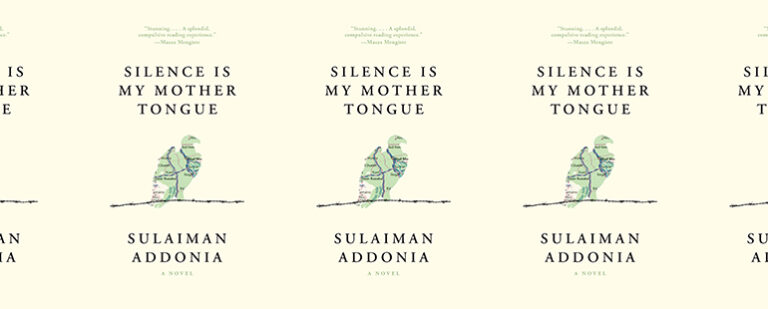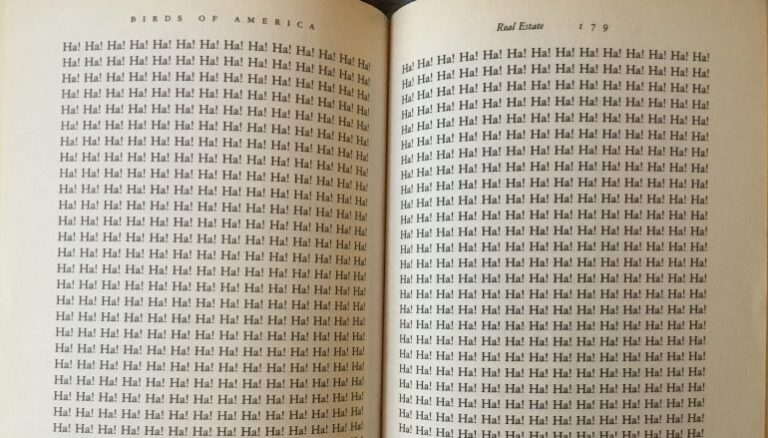Dancing With Text
 Juliet. Aurora. Desdemona. Julie Kent has portrayed them all, bringing texts to life during a 30 year performing career as one of America’s premier ballerinas. Last year, Kent retired from her position as Principal Dancer with American Ballet Theatre and has since taken the helm at The Washington Ballet. (Readers may recognize Kent from the movie Center Stage, in which she played principal dancer Kathleen Donahue).
Juliet. Aurora. Desdemona. Julie Kent has portrayed them all, bringing texts to life during a 30 year performing career as one of America’s premier ballerinas. Last year, Kent retired from her position as Principal Dancer with American Ballet Theatre and has since taken the helm at The Washington Ballet. (Readers may recognize Kent from the movie Center Stage, in which she played principal dancer Kathleen Donahue).
I had the chance to speak with Kent about the role literature plays in the ballet world, from bringing characters to life to creating ballets and curating seasons. This interview has been edited for both clarity and length.
Patrice Hutton: What role do you think literature plays in ballet?
Julie Kent: In any narrative work I think literature is a huge influence. In all of the roles I’ve played—especially the Shakespeare heroines—whether I was Juliet or Titania or Desdemona or Kate in [The Taming of the Shrew], the text and the story line is a huge inspiration for bringing character to life with authenticity and purpose and with real intention and directive in your movements.
PH: I love hearing about that because I’ve seen you dance Juliet, I think Aurora, and Odette. As you were preparing for those roles—or any others you mentioned—how did you think about the character that exists and how it translates into your dancing?
JK: I think imagination is a huge part of any effective storytelling. Whether that’s in written storytelling, dance, or any kind of art.
The first position I landed after finishing my performing career last June was Artistic Director of American Ballet Theatre’s summer program. One of the things I added to the program was my request that [the dancers] read at least one book during the summer. Not only is reading so good for you, I explained to them, it’s a perfect match for a dancer. It requires you to rest. You have to be still while you’re reading, which is much needed for a young dancer. But it also activates your mind and your imagination like nothing other—certainly not like cruising the internet or watching YouTube videos or playing a game. In reading a book you have to engage so much of yourself and your imagination and your vocabulary. In essence, you’re developing skills that you need as a storyteller, because so much of dance—even if it’s a non-narrative work, if it’s completely abstract—is communication. You have to have an idea of what it is you want to communicate, even if it’s abstract. That in itself is storytelling.
I feel that literary works, by their nature, their format, help you develop an awareness of character development, story development, plotlines, foils, the roles people play as a protagonist, antagonist. It’s no accident if you’re moved by something in dance or fiction or nonfiction. It’s craft. Once you identity the craft—the more you expose yourself to it—then the more you’re aware of how to use it or adapt it for your own medium.
PH: I really love hearing that because I’m someone who has transitioned from a being kid who did a lot of ballet to now focusing on writing. I’m curious to hear about your preparation for the role of Juliet. I read an article that spoke about the attributes different dancers bring to Juliet, and the number of different ways [the role] can be portrayed. What was that role to you? It was your last role you danced with ABT, right? And also, do you have anything to say about how it evolved for you over time?
JK: Yes. With Juliet in particular, there are so many beautiful words and phrases that we all commit to memory and they so specifically describe the poignancy of the love between Romeo and Juliet, and their circumstances. So there was never a performance I danced where I hadn’t refreshed my eyes and set them on the words and had them as motivations for certain moments in the ballet. It wasn’t important for the audience to know I knew that, but it was important for me to carry the link between one scene and the next. Certain phrases kept the moment alive to me and gave purpose to certain gestures.
PH: Do you have examples of those?
JK: Certain moments where she says, “My grave is like to be my wedding bed.” Or “[marriage] is an honour that I dream not of” at the beginning in the nursery scene. It’s not disrespectful, it’s not coy. It’s just the truth. She’s not looking to be married, and it’s not something she’s dreaming about or really interested in. It sets a tone where there’s something truthful and clear about that. Any of the dialogue is helpful in trying to develop your character when you have such clear direction like that. I’ve never really seen my performance of Juliet, so I’m not sure how it would change to the observer (from my point of view). It’s always about who I was dancing with. It’s not like you have a character or a performance and you keep doing it year after year. It always comes to life through the interaction of whoever you’re on stage with—each performance takes its own direction if you have a different Romeo, or Lord Capulet, Tybalt, Paris, or Lady Capulet. The dynamic between you and your partner at your time. I’ve danced Romeo and Juliet with 16, 17 different partners. That’s a full range of interaction and dynamic. I’m sure Juliet was slightly different with every single one of them because of how they made me feel and how they partnered me, and how they constructed their performance, and how we worked off of each other.
PH: I wish I could sit through every performance and watch.
JK: I wish I could too.
PH: A few months ago I wrote a piece (“Old Stories, New Ballets”) about contemporary choreographers who are working with narrative and story. I also read something mentioning that you wanted to bring Ratmansky ballets to The Washington Ballet. Right now, what choreographers inspire you with their use of story?
JK: Christopher Wheeldon is doing a lot of narrative. Ratmansky does both—abstract and narrative. There are challenges to both, especially if you’re trying to bring to life a narrative that everyone knows really well. You’re open to somehow not fulfilling someone’s expectations. But at least everyone knows the story. If you’re doing a narrative where no one knows the story well, it’s hard to follow, it’s hard to sell tickets to because it doesn’t have that kind of name recognition. So I think doing an abstract or completely new non-narrative work is probably the easiest to construct because you follow your own path. But as I mentioned at the beginning, dance is about communication, so even if it’s not a direct story line with characters and plot development it still has to—the craft, the piece—still does have to have beginning, middle, end. It has to have form, shape, contact, dynamic. In my goals for The Washington Ballet, in bringing in masterworks from all the greatest choreographers from the 20th & 21st centuries, it’s really to help us all—dancers, institutions, the community—to identify what it is that makes a masterwork. What are those ingredients of form and craft, dynamic, and music that all put together equals a classic. If you’re familiar you can a) recognize, and b) hopefully create it.
PH: I love hearing people’s different takes on whether [Balanchine’s] Serenade has a story or not.
JK: I don’t know if it has a story. I‘ve never danced Serenade. American Ballet Theatre didn’t dance Serenade. We’re just too close [to New York City Ballet]. But I get to enjoy it with everyone else. I don’t have to dance it in my head every time I see it. I can have that debate with myself: is there a story, is there no story, and just sort of explore it as a work of art like anybody else in the audience. That’s a joy.
PH: I bet there are very few ballets you have that sort of relationship with.
JK: Exactly. There are a few, and I definitely temper the disappointment of not feeling it to just enjoying the fact that when I hear the music, I don’t see the steps. I don’t know how they feel to dance. I can enjoy them with bliss.
Photo: Rosalie O’Connor


